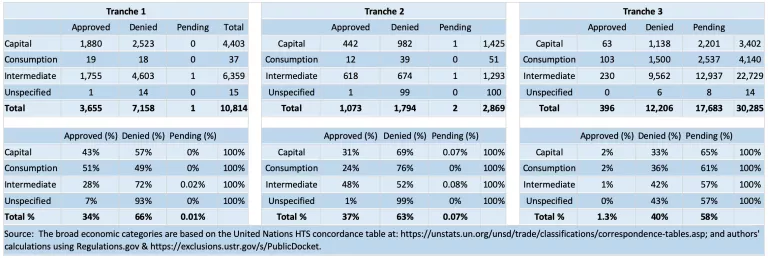- | Academic & Student Programs Academic & Student Programs
- | Expert Commentary Expert Commentary
- |
The Latest Data on China Tariff Exclusions Shows Only a Small Number of Requests Approved
The number of tariff exclusion requests also have dropped
The United States continues to process product exclusion requests or waivers for US businesses impacted by the Trump Administration’s tariffs. An analysis of the latest data for tranche three shows that of those requests that have been decided, the share of the requests that have been approved remains low and has even dropped slightly.
Under Section 301(B) of the Trade Act of 1974 (commonly called “Section 301”), President Trump has authorized tariffs on approximately $375 billion of US imports from China. But because US businesses can be adversely affected by these tariffs—for example, when a manufacturer needs a specific part from China to make its own products—businesses can request that the Office of the United States Trade Representative (USTR) exclude qualified products from the tariffs.
USTR has announced four lists or tranches of China Section 301 tariffs. Tranches one and two covered $34 billion and $16 billion of US imports from China, respectively. Tranches three and four covered $200 billion and $300 billion, respectively.

Earlier this year, we compiled an update to our data on product exclusion requests for the three tranches of Section 301 tariffs through December 3, 2019. Now we include additional data on the product exclusion requests for tranche three of the Section 301 tariffs as of January 14, 2019.
Looking at all three tranches, 5,124 (12 percent) of the 43,968 total requests have been approved. By comparison, approximately 50 percent of the steel and aluminum tariff exclusion requests have been approved. The higher approval rate for the steel and aluminum industries is notable and may reflect a number of factors. For instance, the administration’s policy goals may differ for steel and aluminum compared to China.